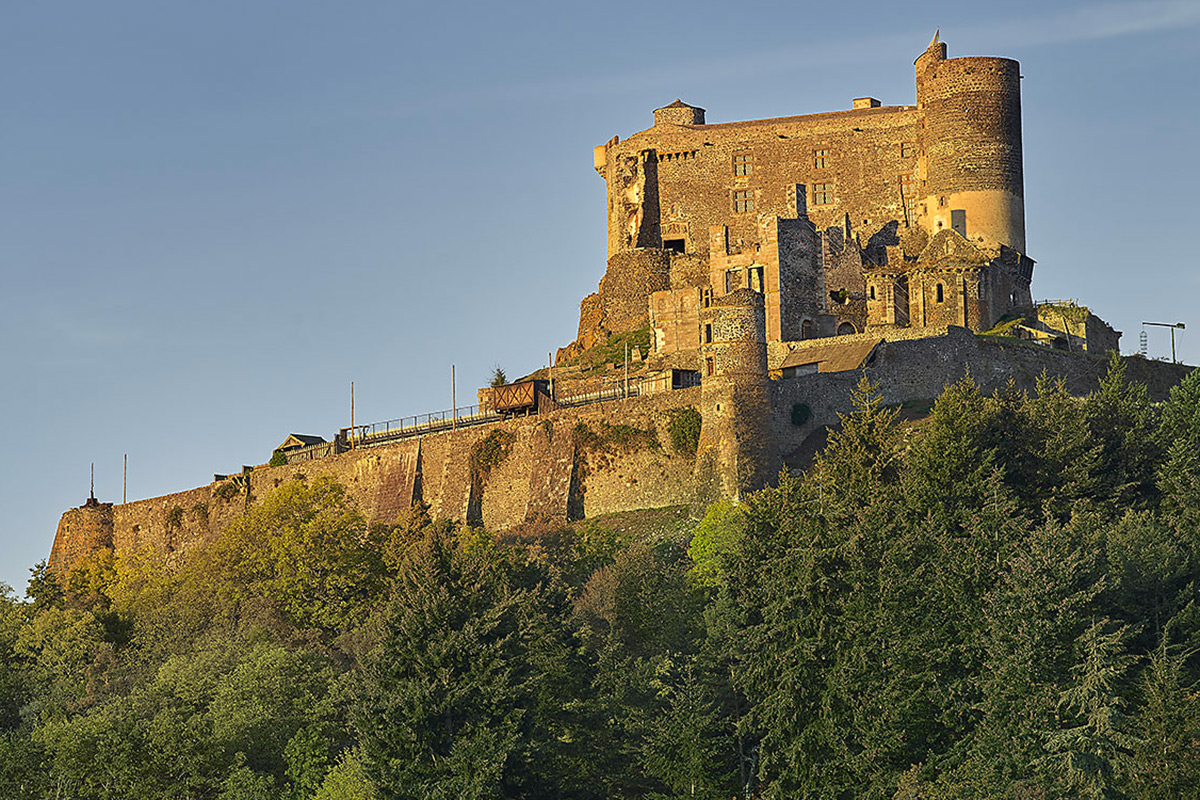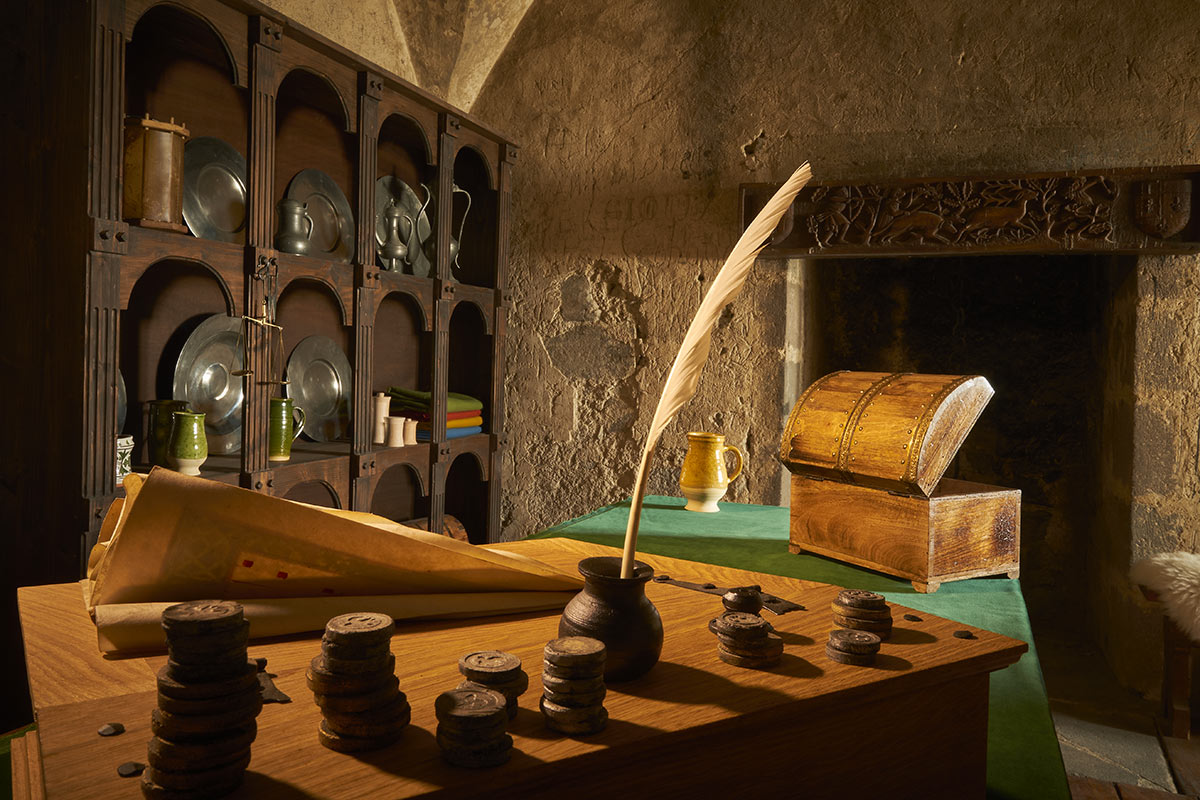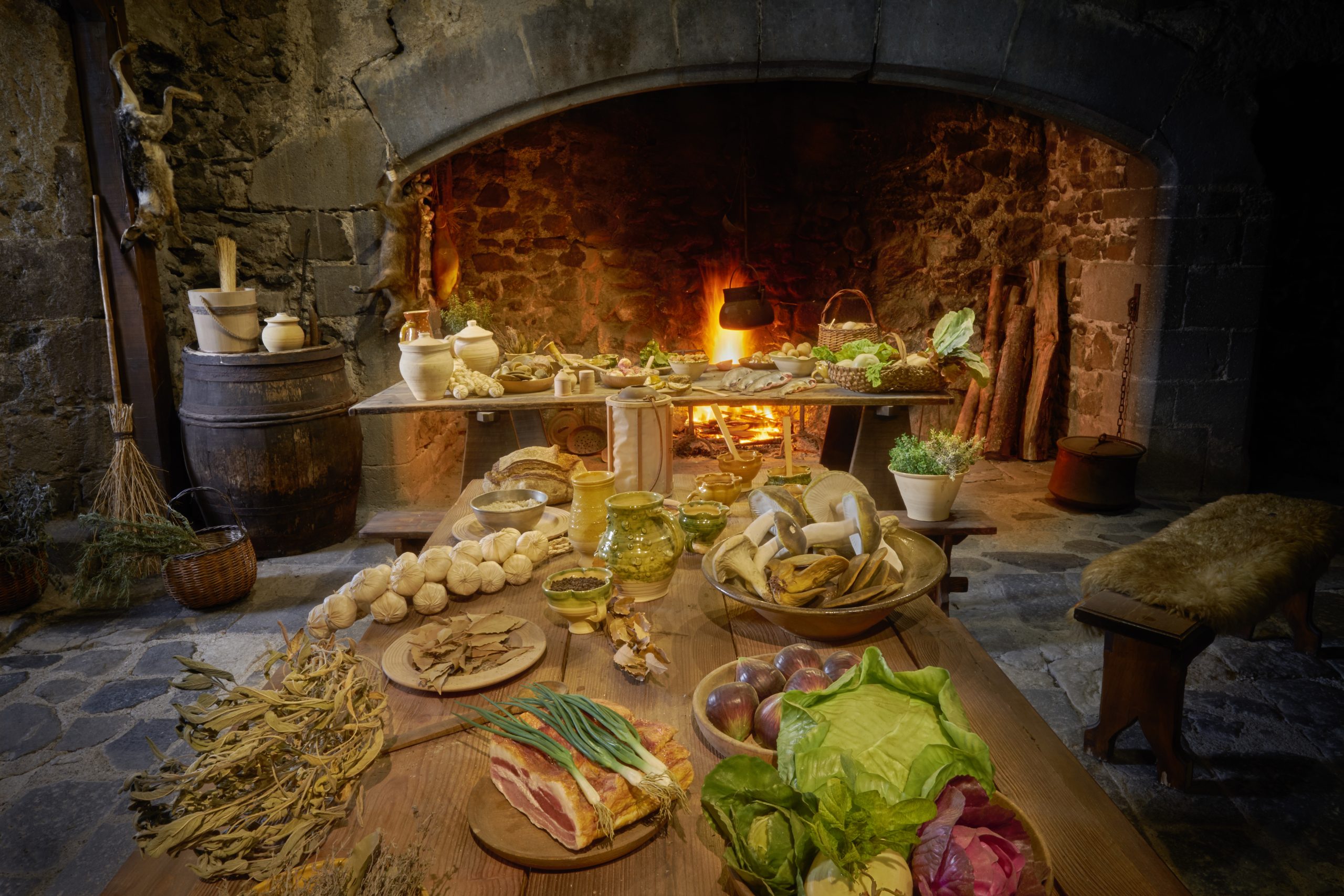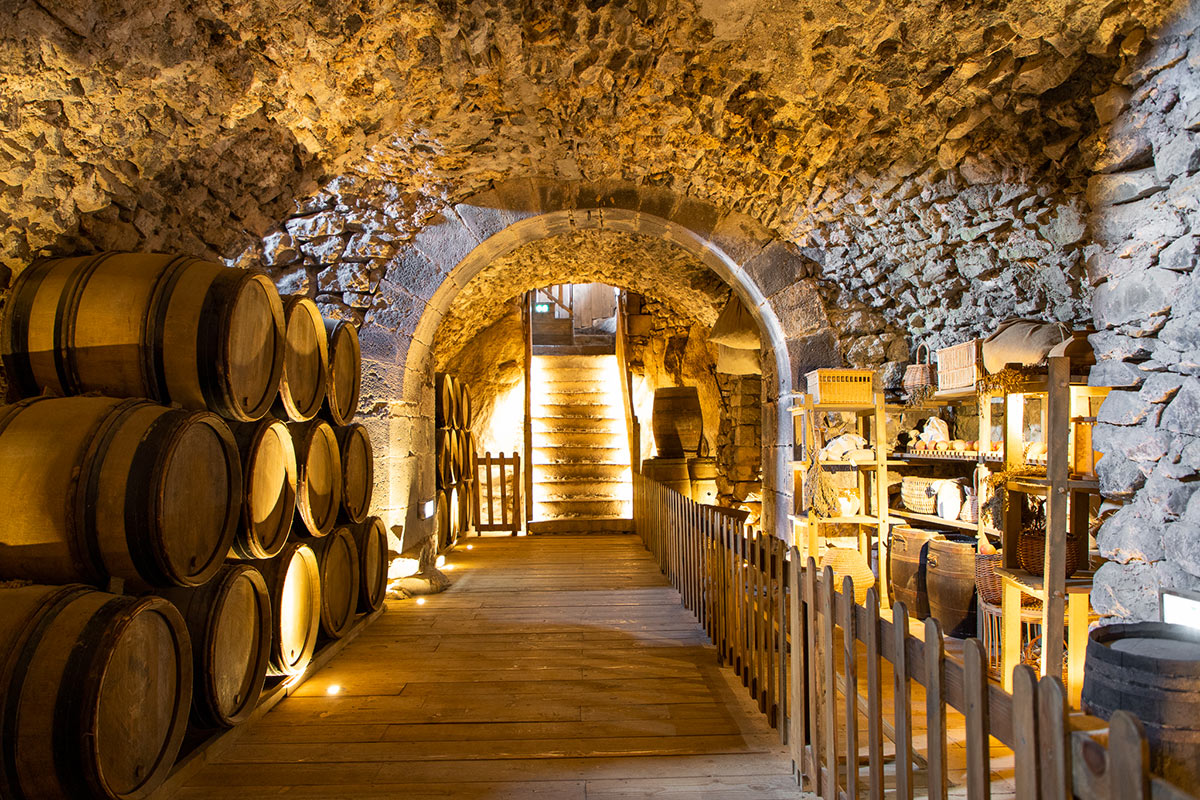The origins
Murol peaks at 1050 meters, giving it undeniable defensive value. Founded in the 11th century, the castle’s first vocation was to command three important regional roads. Located in the heart of a fertile, prosperous and highly populated region, at the crossroads of essential routes, the seigneury of Murol is a particularly interesting territory.
During the Hundred Years’ War
In the 13th and 14th centuries, the lords of Murol enjoyed an important position in Auvergne but they did not escape the crisis that shook France: the Hundred Years’ War and the epidemics in particular. The castle of Murol was never taken by the English, but the ravages effects of the plague caused the desertion of many surrounding villages.
The intervention of Guillaume de Murol
It is in these difficult circumstances that the castle regains its role as protector of the population. Works are accomplished for its reinforcement in the years 1390 by Guillaume II de Murol. Withdrawn in his lands after years of knighthood, he took firm control of the administration of his property. For twenty years, he handled all his business himself, enxtanding and restoring his fortress. He kept two registers in which poems and personal memories are mixed with figures, but also a long autobiographical will. Thanks to this invaluable testimony, we are now in a position to understand the role of the lord and to highlight it.
From the 15th to the 20th century
Between the 15th and the beginning of the 17th century, the fortress, property of the Estaing family, continued to adapt to the different military evolutions. Spared by Richelieu’s disarmament policy and then by the French Revolution, the castle gradually lost all residential function, becoming successively a den of robbers and a stone quarry.
In 1889, the castle of Murol was listed historical monument. The following year, its last owner, Henri-Guillaume de Chabrol, gave it to the department of Puy-de-Dôme which in turn gave it to the commune of Murol in 1953, which still owns the building today.




